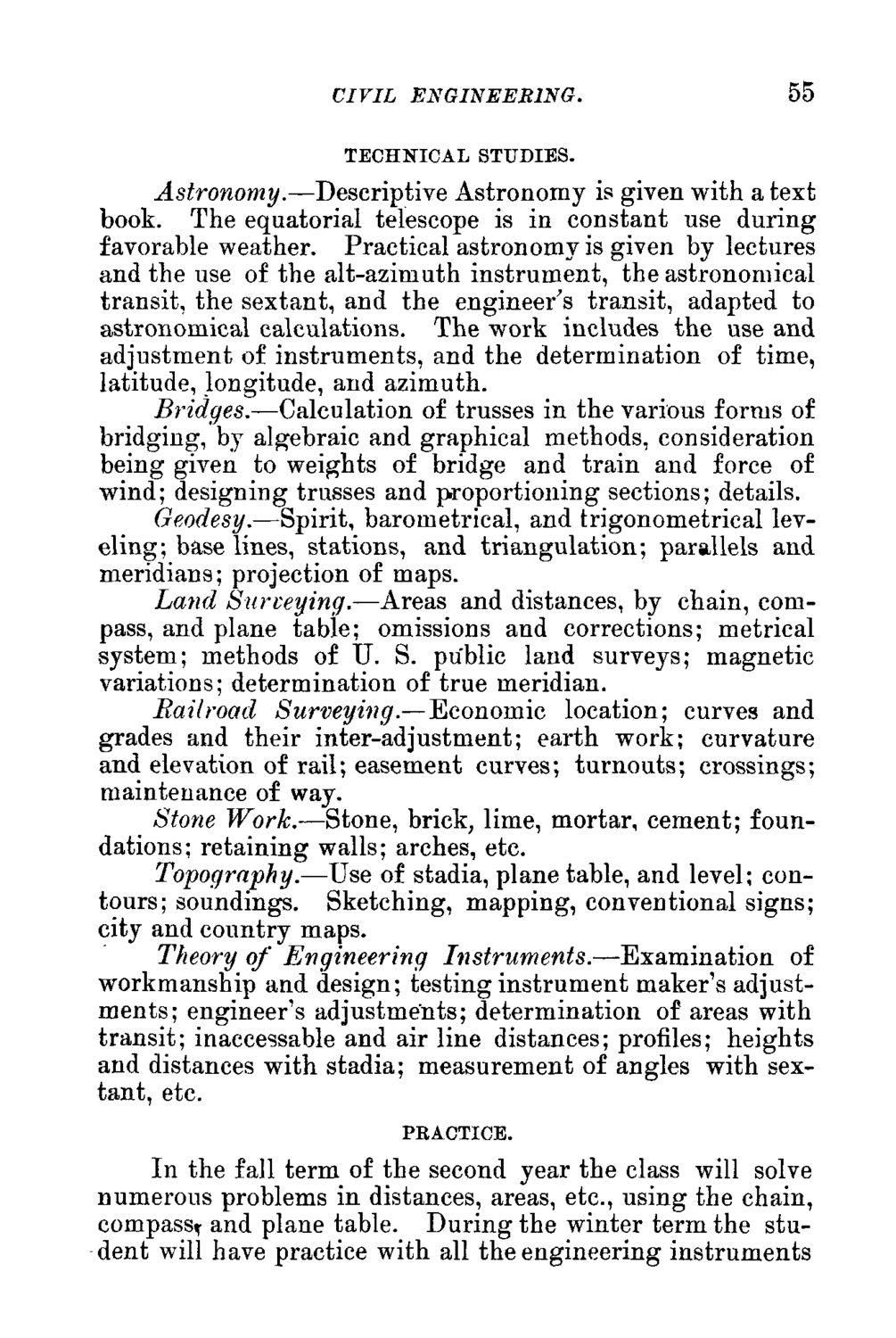| |
| |
Caption: Course Catalog - 1888-1889
This is a reduced-resolution page image for fast online browsing.

EXTRACTED TEXT FROM PAGE:
CIVIL ENGINEERING. TECHNICAL STUDIES. 55 Astronomy.—Descriptive Astronomy is given with a text book. The equatorial telescope is in constant use during favorable weather. Practical astronomy is given by lectures and the use of the alt-azimuth instrument, the astronomical transit, the sextant, and the engineer's transit, adapted to astronomical calculations. The work includes the use and adjustment of instruments, and the determination of time, latitude, longitude, and azimuth. Bridges.—Calculation of trusses in the various forms of bridging, by algebraic and graphical methods, consideration being given to weights of bridge and train and force of wind; designing trusses and proportioning sections; details. Geodesy.—Spirit, barometrical, and trigonometrical leveling; base lines, stations, and triangulation; parallels and meridians; projection of maps. Land Surveying.—Areas and distances, by chain, compass, and plane table; omissions and corrections; metrical system; methods of TJ. S. public land surveys; magnetic variations; determination of true meridian. Railroad Surveying.— Economic location; curves and grades and their inter-adjustment; earth work; curvature and elevation of rail; easement curves; turnouts; crossings; maintenance of way. Stone Work.—Stone, brick, lime, mortar, cement; foundations; retaining walls; arches, etc. Topography.—Use of stadia, plane table, and level; contours; soundings. Sketching, mapping, conventional signs; city and country maps. Theory of Engineering Instruments.—Examination of workmanship and design; testing instrument maker's adjustments; engineer's adjustments; determination of areas with transit; inaccessable and air line distances; profiles; heights and distances with stadia; measurement of angles with sextant, etc. PRACTICE. In the fall term of the second year the class will solve numerous problems in distances, areas, etc., using the chain, compass* and plane table. During the winter term the student will have practice with all the engineering instruments
| |